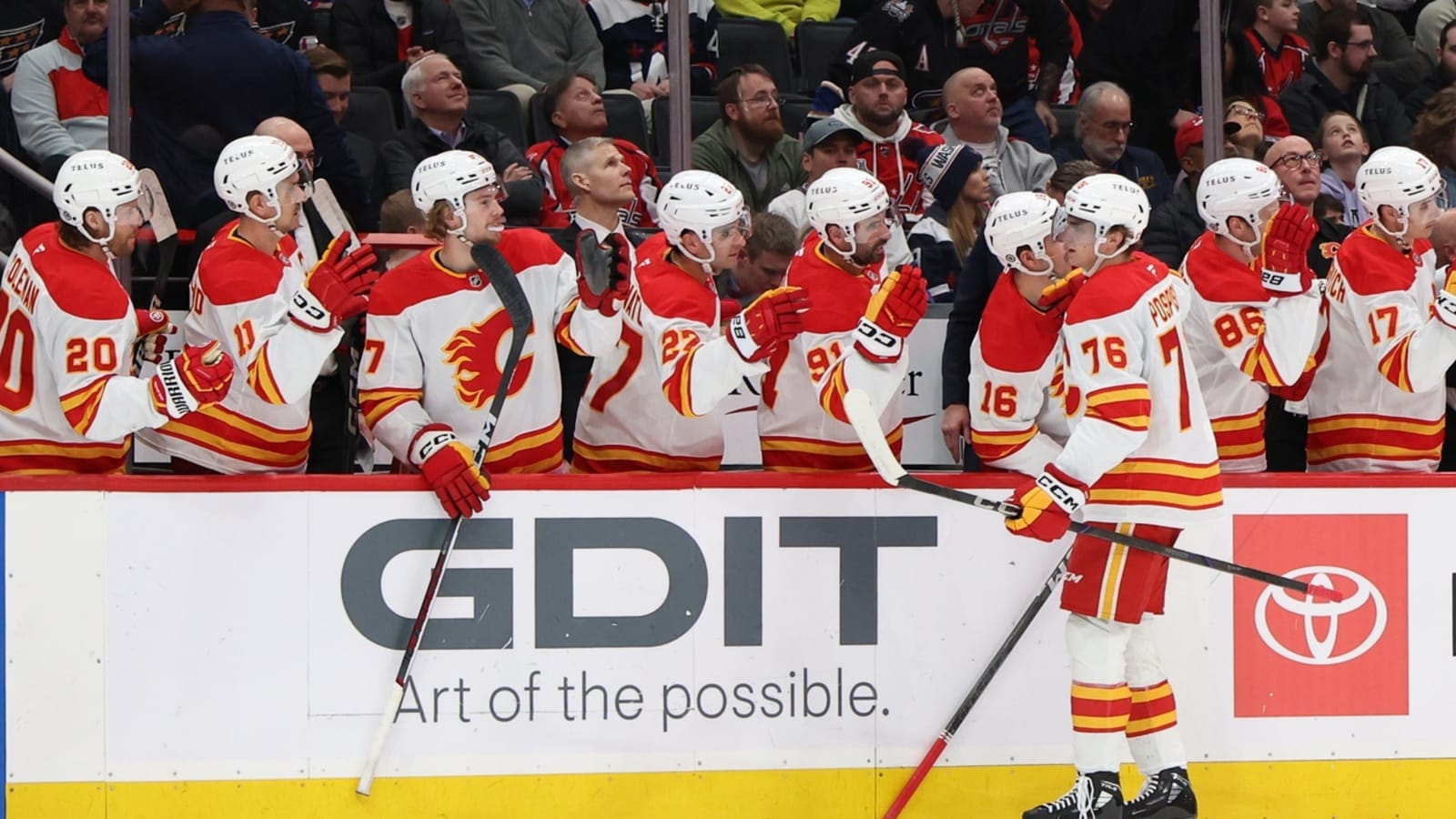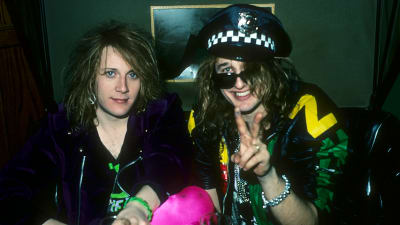
The introduction of coach’s challenges and video review, in general, has led to a knee-jerk reaction for most goals scored in the National Hockey League: “Hey, think this one’s gonna count?”
Between off-side challenges well after the initial zone entry, hazy interpretations of the goalie review rule, and just the sheer volume of reviews and challenges, it’s natural to be skeptical that a goal will stand up to scrutiny from the officials.
On Tuesday night in Washington , Calgary Flames forward Martin Pospisil was credited with a goal after a puck bonked in off his leg. On the replay, it was pretty apparent that Pospisil directed the puck towards the net with his leg and there was a follow-through – a kicking motion – with his leg.
FLAMES GOAL
The puck bounces off Martin Pospisil's leg and goes in! It's 1-0 Calgary!
: Sportsnet | NHL#Flames pic.twitter.com/qSEP1ILHCw
— Robert Munnich (@RingOfFireCGY) February 26, 2025
A closer look at the Pospisil goal. The Capitals thought he kicked it in.
: Sportsnet | NHL#Flames https://t.co/ByduQxMDiJ pic.twitter.com/mtFBw1luA1
— Robert Munnich (@RingOfFireCGY) February 26, 2025
So how come the goal counted?
Well, the short answer is “because of the rules.” But let’s get into the long answer a bit.
Rule 37 in the NHL rulebook defines video review processes. There are two broad categories of video reviews: situation room reviews and coach’s challenge reviews.
Every single goal is routinely reviewed by the Situation Room to answer “Did the puck go into the net in a legal way?” Nobody needs to initiate this type of review, it happens automatically. The rulebook defines the categories of things that the Situation Room looks at as follows, as defined by Rule 37.3:
- a) Puck crossing the goal line;
- (b) Puck in the net prior to the goal frame being dislodged;
- (c) Puck in the net prior to (or after) the expiration of time at the end of a period;
- (d) With the use of a foot/skate, was a “distinct kicking motion” evident?
- (e) Puck deliberately directed, batted, or thrown into the net by an attacking Player by any means (and with any part of his body) other than with his stick;
- (f) Puck deflected directly into the net off an On-Ice Official;
- (g) Puck struck or deflected into the net with a high-stick, above the height of the crossbar;
- (h) Puck entering the net in a proper manner through goal mouth (ensuring puck did not enter net improperly through net meshing or underneath the net frame, etc.);
- (i) Puck entering the net as the culmination of a continuous play where the result of the play was unaffected by any whistle blown by the Referee upon his losing sight of the puck; and
- (j) The legitimacy of all potential goals on Penalty Shot or Shootout attempts to ensure compliance with applicable rules (e.g., double tap, goalkeeper throwing stick, goalkeeper dislodging goal, shooter cradling puck above the normal height of the shoulders, shooter performing illegal spin-o-rama move, skater’s continued forward advancement of puck, goalkeeper leaving crease prior to puck touch at center ice, etc.)
Here’s what Rule 37.4 says about the Distinct Kicking Motion review:
Plays that involve a puck entering the net as a direct result of a “distinct kicking motion” shall be ruled NO GOAL. A “distinct kicking motion,” for purposes of Video Review, is one where the video makes clear that an attacking Player has deliberately propelled the puck with a kick of his foot or skate and the puck subsequently enters the net. A goal cannot be scored on a play where an attacking Player propels the puck with his skate into the net (even by means of a subsequent deflection off of another Player) using a “distinct kicking motion.” A goal also cannot be scored on a play where an attacking Player kicks any equipment (stick, glove, helmet, etc.) at the puck, including kicking the blade of his own stick, causing the puck to cross the goal line. A puck that deflects into the net off an attacking Player’s skate who does not use a “distinct kicking motion” shall be ruled a GOAL. A puck that is directed into the net by an attacking Players’ skate shall also be ruled a GOAL, as long as no “distinct kicking motion” is evident.
In other words: to be disallowed, a puck has to go in off a player’s foot or skate and have a distinct kicking motion. Because Pospisil’s goal went in off his ankle, whether or not there was a distinct kicking motion becomes irrelevant.
How come Washington coach Spencer Carberry didn’t challenge the goal? Simple: coach’s challenges only cover a missed off-side, a missed stoppage or goaltender interference prior to a goal. A potential distinct kicking motion is under the purview of the Situation Room – similar to a puck being redirected by a high stick – so coaches aren’t able to challenge on those grounds.
The Flames are back at it on Thursday night against the Tampa Bay Lightning.
More must-reads:
- Buffalo Sabres' GM change isn't about rebuilding
- Dylan Raiola and other big-name QBs to know in the transfer portal
- The 'Last 10-TD season by NFL team' quiz
Breaking News
Trending News
Customize Your Newsletter
 +
+
Get the latest news and rumors, customized to your favorite sports and teams. Emailed daily. Always free!








